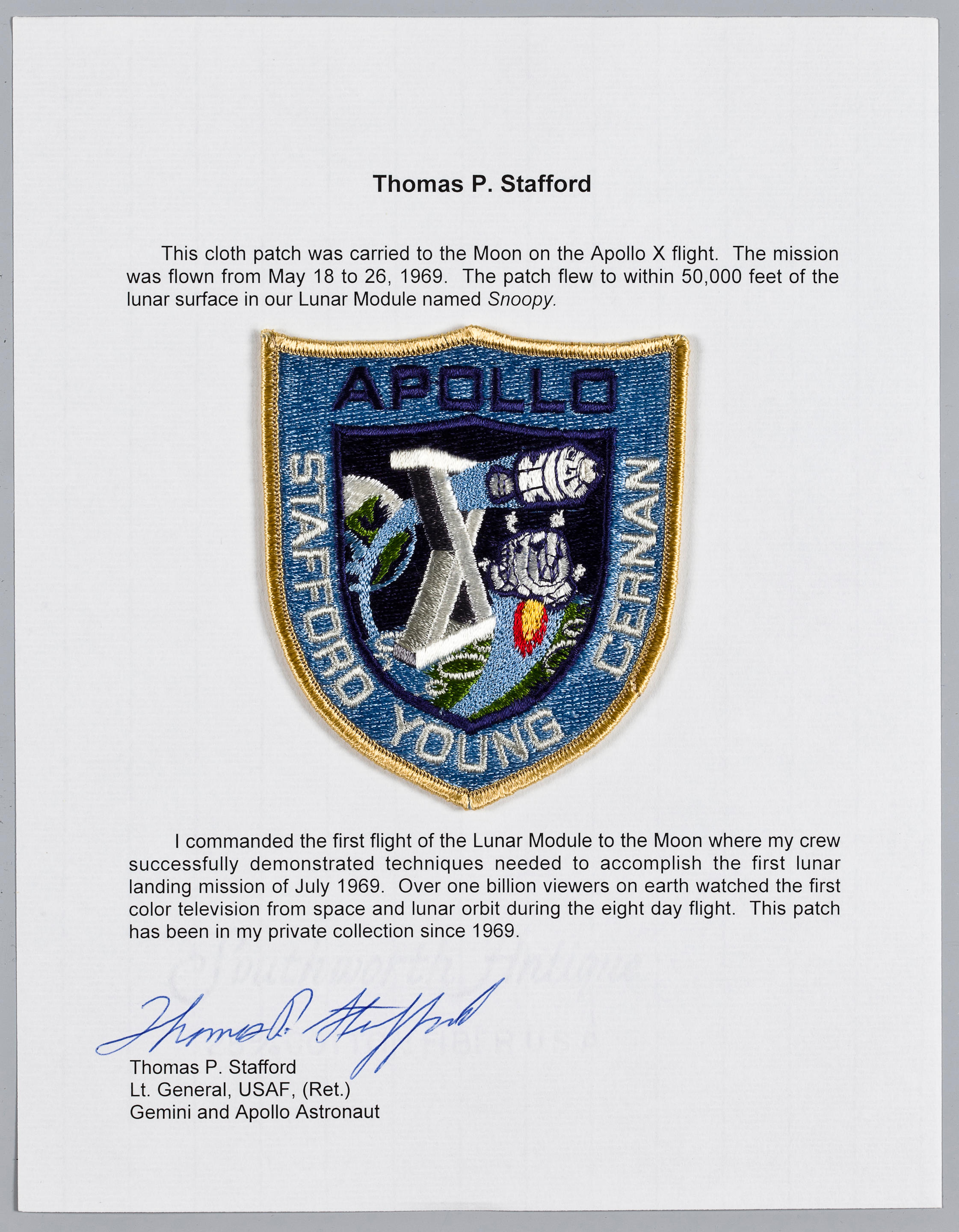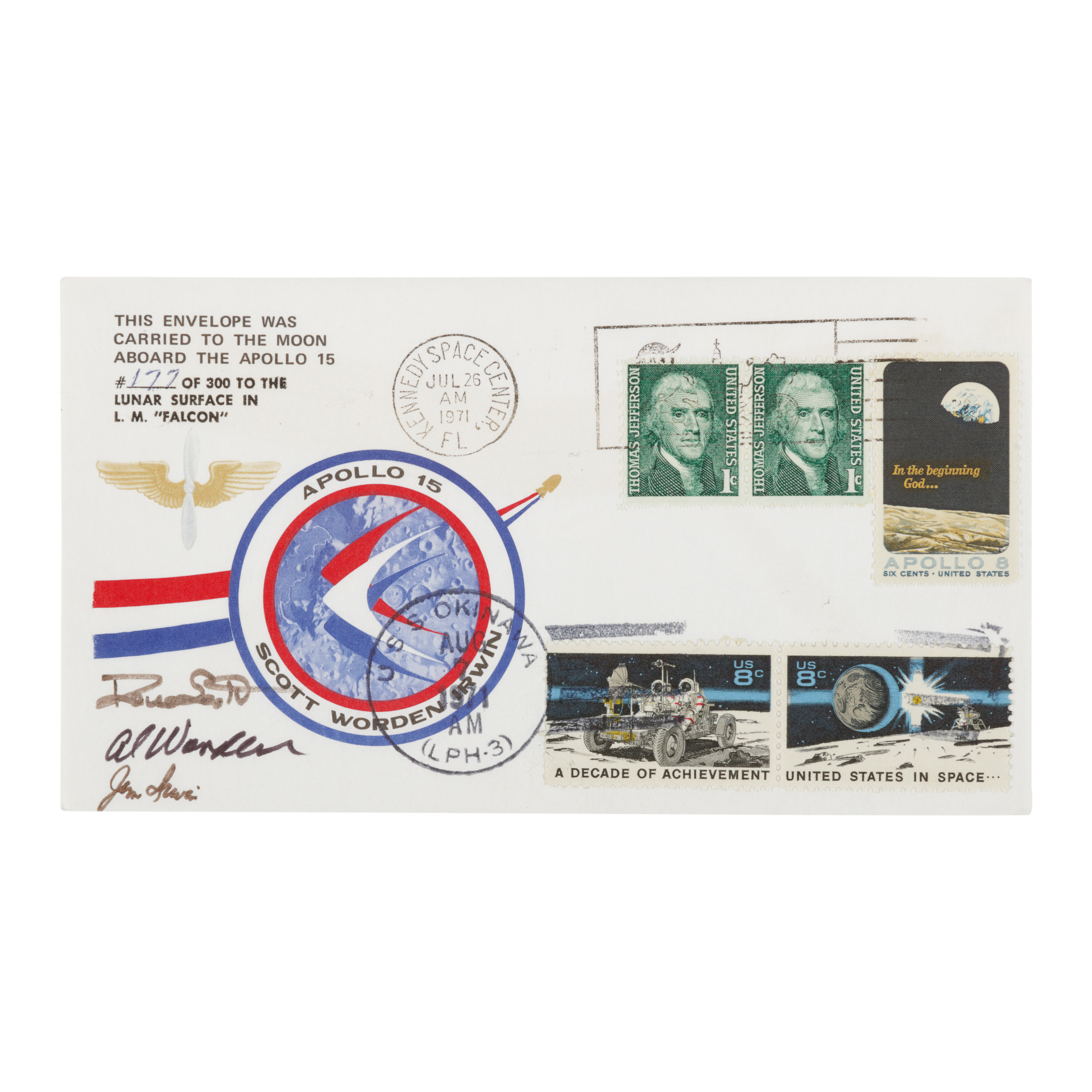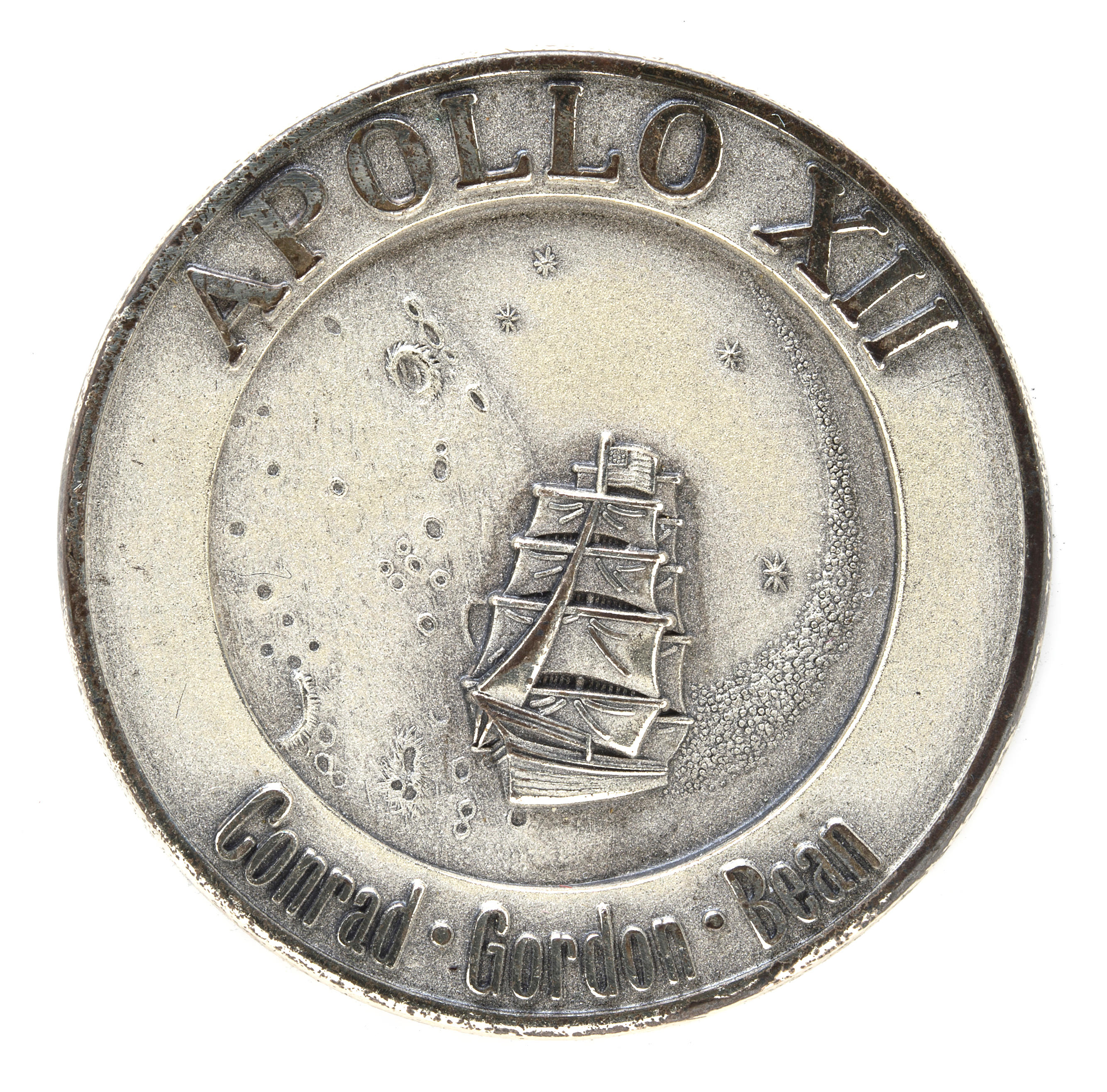EAGLE'S LANDING SEQUENCE AND DESCRIPTION BY BUZZ ALDRIN. Three flown sheets from the Apollo 11 LM G & N dictionary, May-July 1969, 6 pp being "PGNS-43" to "PGNS-48," 8 by 5 ½ inches, each inscribed in ink by Buzz Aldrin. Probably the most important sheets from the most significant flight event during the Apollo 11 mission. They list events and entry commands to enable Lunar Module Eagle to descend from lunar orbit and touch down on the moon's surface. Neil Armstrong and Buzz Aldrin followed these guidance computer programs closely as they descended into history and became the first humans to land on another celestial body - the moon. Accompanied by a Typed Letter Signed by Aldrin, which reads: "Enclosed with this letter are three sheets numbered PGNS-43/44, PGNS-45/46, and PGNS-47/48 from the Apollo 11 LM G and N Dictionary, Part No. SKB32100074-361, S/N 1001. They are part of the entire manual that was carried to the lunar surface in Lunar Module Eagle on the first lunar landing mission during July 16 to 24, 1969. These sheets are from the Primary Guidance and Navigation Section and have the exact computer procedures to perform the Power Descent Initiation (PDI) sequence which enabled Neil Armstrong and I to land on the Moon. These are the most significant pages from the entire dictionary, and from my view point, some of the most important pages available to us during the entire flight. These steps enabled the actual landing by Man on the surface of the Moon. Sheet PGNS-43/44 has the P63 Braking Phase Program that started our descent to the surface. Neil Armstrong and I configured the flight computer for the P63 operations as listed on page PGNS-43. We had just finished the burn of Lunar Module Eagle's descent engine to put us in a lower orbit while behind the Moon. Once we were in view of the Earth and Mission Control, we reported the status of the burn which had been nearly perfect. Neil then completed the final steps of the P63 program listed on PGNS-44 up to the 'PRO' (proceed) command, where I then punched that particular button on the computer. 'IGN' (ignition) of our descent engine started and Neil verified all steps were completed at each point of time past ignition (+:05, +3:00 and +4:00). On page PGNS-43 I have inscribed: 'Used by Neil Armstrong during Eagle's landing on Apollo XI' and on page PGNS-44 I have inscribed: 'Carried to the lunar surface on Apollo XI.' I have signed both sides of this sheet. All was going well until Neil and I saw our instrument panel flash a '1202' program alarm. We both queried Mission Control about this alarm because we had never seen it before in any simulation. After a few tense moments, Houston radioed us that we were 'GO on that alarm.' That was good news but not that reassuring when a few seconds later the same alarm occurred. The alarm coincided when I keyed the computer for information. The computer was basically telling us it had too many tasks to perform and was overloaded. About 3 minutes later an additional alarm, a '1201' flashed. Mission Control told us that it was of the same type as the '1202' and that we were still 'GO' for landing. At about 8 and ½ minutes into the PDI sequence, Neil verified that the flight computer had initiated P64 or the Approach Phase Program. These are the steps listed on page PGNS-45. Neil was monitoring the sequence of events described on this page and the visual view out his window. He cross-checked our descent rate with the PDI descent grid from our LM Timeline Book. We had just pitched over and got our first good view of the general landing area. Neil became increasingly concerned because we were heading for a large crater surrounded by boulders. At around 500 feet above the lunar surface, Neil initiated P66 or Landing Phase Program which steps were located on pages PGNS-46 and PGNS-47. This allowed Neil to manually fly Eagle to the lunar surface with computer support. He slowed the descent rate to just a few feet per second and studied the
EAGLE'S LANDING SEQUENCE AND DESCRIPTION BY BUZZ ALDRIN. Three flown sheets from the Apollo 11 LM G & N dictionary, May-July 1969, 6 pp being "PGNS-43" to "PGNS-48," 8 by 5 ½ inches, each inscribed in ink by Buzz Aldrin. Probably the most important sheets from the most significant flight event during the Apollo 11 mission. They list events and entry commands to enable Lunar Module Eagle to descend from lunar orbit and touch down on the moon's surface. Neil Armstrong and Buzz Aldrin followed these guidance computer programs closely as they descended into history and became the first humans to land on another celestial body - the moon. Accompanied by a Typed Letter Signed by Aldrin, which reads: "Enclosed with this letter are three sheets numbered PGNS-43/44, PGNS-45/46, and PGNS-47/48 from the Apollo 11 LM G and N Dictionary, Part No. SKB32100074-361, S/N 1001. They are part of the entire manual that was carried to the lunar surface in Lunar Module Eagle on the first lunar landing mission during July 16 to 24, 1969. These sheets are from the Primary Guidance and Navigation Section and have the exact computer procedures to perform the Power Descent Initiation (PDI) sequence which enabled Neil Armstrong and I to land on the Moon. These are the most significant pages from the entire dictionary, and from my view point, some of the most important pages available to us during the entire flight. These steps enabled the actual landing by Man on the surface of the Moon. Sheet PGNS-43/44 has the P63 Braking Phase Program that started our descent to the surface. Neil Armstrong and I configured the flight computer for the P63 operations as listed on page PGNS-43. We had just finished the burn of Lunar Module Eagle's descent engine to put us in a lower orbit while behind the Moon. Once we were in view of the Earth and Mission Control, we reported the status of the burn which had been nearly perfect. Neil then completed the final steps of the P63 program listed on PGNS-44 up to the 'PRO' (proceed) command, where I then punched that particular button on the computer. 'IGN' (ignition) of our descent engine started and Neil verified all steps were completed at each point of time past ignition (+:05, +3:00 and +4:00). On page PGNS-43 I have inscribed: 'Used by Neil Armstrong during Eagle's landing on Apollo XI' and on page PGNS-44 I have inscribed: 'Carried to the lunar surface on Apollo XI.' I have signed both sides of this sheet. All was going well until Neil and I saw our instrument panel flash a '1202' program alarm. We both queried Mission Control about this alarm because we had never seen it before in any simulation. After a few tense moments, Houston radioed us that we were 'GO on that alarm.' That was good news but not that reassuring when a few seconds later the same alarm occurred. The alarm coincided when I keyed the computer for information. The computer was basically telling us it had too many tasks to perform and was overloaded. About 3 minutes later an additional alarm, a '1201' flashed. Mission Control told us that it was of the same type as the '1202' and that we were still 'GO' for landing. At about 8 and ½ minutes into the PDI sequence, Neil verified that the flight computer had initiated P64 or the Approach Phase Program. These are the steps listed on page PGNS-45. Neil was monitoring the sequence of events described on this page and the visual view out his window. He cross-checked our descent rate with the PDI descent grid from our LM Timeline Book. We had just pitched over and got our first good view of the general landing area. Neil became increasingly concerned because we were heading for a large crater surrounded by boulders. At around 500 feet above the lunar surface, Neil initiated P66 or Landing Phase Program which steps were located on pages PGNS-46 and PGNS-47. This allowed Neil to manually fly Eagle to the lunar surface with computer support. He slowed the descent rate to just a few feet per second and studied the







.jpg)







Try LotSearch and its premium features for 7 days - without any costs!
Be notified automatically about new items in upcoming auctions.
Create an alert